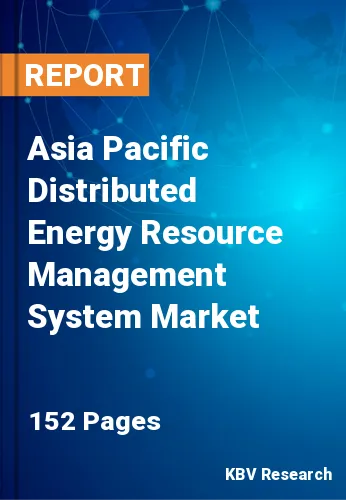The Asia Pacific Distributed Energy Resource Management System Market would witness market growth of 19.8% CAGR during the forecast period (2023-2029).
The production of renewable energy has been fast increasing. The market demand is being driven by a rising awareness of renewable energy sources like solar, biomass, wind, and tide power, as well as clean energy, often known as green energy. Due to the rapidly growing population, fast urbanization and industrialization, expanding infrastructural operations, and improved access to energy, it is predicted that the electricity demand will increase significantly over the next few years. Furthermore, carbon emissions are significantly increased by traditional energy production methods, including burning coal, natural gas, and fossil fuels. Renewable energy sources like solar energy and wind energy are steadily displacing fossil fuels.
Increasing the use of sophisticated analytics, expanding the usage of cloud-based solutions, developing blockchain-based solutions, and putting more emphasis on cybersecurity are some recent trends in DERMS. In order to improve the performance of distributed energy resources, energy suppliers are increasingly turning to sophisticated analytics. For instance, machine learning (ML) algorithms can assist in predicting patterns of energy consumption and modifying the allocation of energy resources correspondingly. Energy providers are now able to more effectively and economically manage their dispersed energy supplies due to cloud computing. Cloud-based solutions can automate repetitive activities, give real-time insight into energy usage, and allow for remote monitoring and management of dispersed energy supplies.
India ranked third in the world for electricity production in 2020. This energy is produced using both traditional and renewable resources. Through numerous government-led initiatives centered on "Power for All," the nation has made significant progress in enhancing access to power throughout urban and rural areas. As a result, the need to address problems with conventional electric networks, growing environmental awareness, and greater acceptance of smart grid technology to boost efficiency in energy consumption and conservation are all contributing to the expansion of the smart grid network. Hence, the region presents lucrative growth prospects for the market.
The China market dominated the Asia Pacific Distributed Energy Resource Management System Market by Country in 2022 and would continue to be a dominant market till 2029; thereby, achieving a market value of $115,506.8 Thousands by 2029. The Japan market is experiencing CAGR of 19% during (2023 - 2029). Additionally, The India market would display a CAGR of 20.6% during (2023 - 2029).
Based on Offering, the market is segmented into Services and Software (Virtual Power Plant (VPP) Software, Management & Control and Analytics). Based on End User, the market is segmented into Industrial, Commercial and Residential. Based on Application, the market is segmented into Solar PV Units, Energy Storage Systems, Wind Generation Units, Combined Heat & Power Generation Systems, EV Charging Stations and Others. Based on countries, the market is segmented into China, Japan, India, South Korea, Singapore, Malaysia, and Rest of Asia Pacific.
Free Valuable Insights: The Worldwide Distributed Energy Resource Management System Market is Projected to reach USD 1.1 Billion by 2029, at a CAGR of 19.4%
The market research report covers the analysis of key stake holders of the market. Key companies profiled in the report include Siemens AG, Schneider Electric SE, General Electric Company, Hitachi, Ltd. (Hitachi Energy Ltd.), Emerson Electric Co., Mitsubishi Electric Corporation, Oracle Corporation, Itron, Inc., Generac Holdings, Inc. and Enel S.p.A.
By Offering
By End User
By Application
By Country
Our team of dedicated experts can provide you with attractive expansion opportunities for your business.

